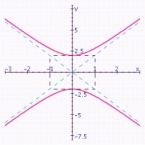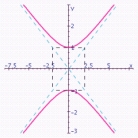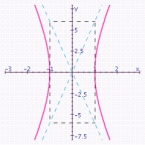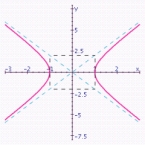Multiple Choice
Graph the hyperbola. Specify the following: vertices, foci, lengths of transverse and conjugate axes, eccentricity, and equations of the asymptotes.
A)  vertices: ;
vertices: ;
Foci: ;
Length of transverse axis: 4;
Length of conjugate axis: 2;
Eccentricity:
Asymptotes: .
B)  vertices: ;
vertices: ;
Foci: ;
Length of transverse axis: 2;
Length of conjugate axis: 4;
Eccentricity: ;
Asymptotes: .
C)  vertices: ;
vertices: ;
Foci: ;
Length of transverse axis: 4;
Length of conjugate axis: 2;
Eccentricity:
Asymptotes: .
D)  vertices: ;
vertices: ;
Foci: ;
Length of transverse axis: 2;
Length of conjugate axis: 12;
Eccentricity: ;
Asymptotes: .
E)  vertices: ;
vertices: ;
Foci: ;
Length of transverse axis: 2;
Length of conjugate axis: 4;
Eccentricity: Asymptotes: .
Correct Answer:

Verified
Correct Answer:
Verified
Q10: Find the equation of the tangent
Q11: Suppose the line <span class="ql-formula"
Q12: The point <span class="ql-formula" data-value="(
Q13: An angle of rotation is specified,
Q14: Graph the hyperbola. Specify the following:
Q16: Find <span class="ql-formula" data-value="\sin \theta"><span
Q17: Graph the ellipse. Specify the lengths
Q18: Graph the hyperbola. Specify the following:
Q19: Find the equation of the tangent
Q20: Determine the graph that represents the